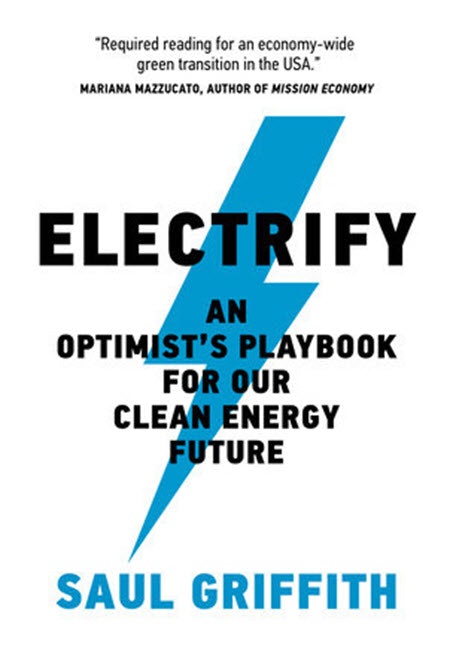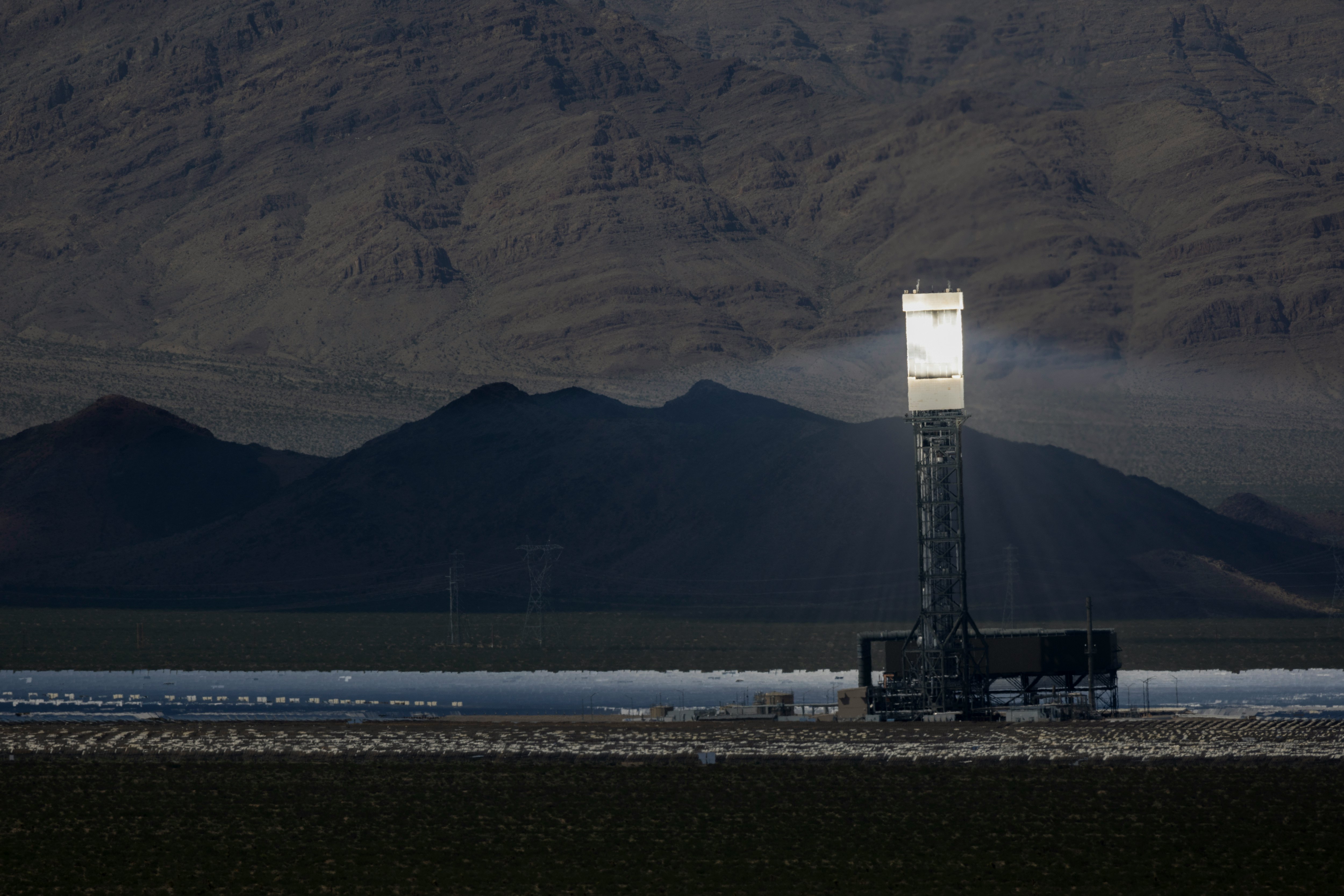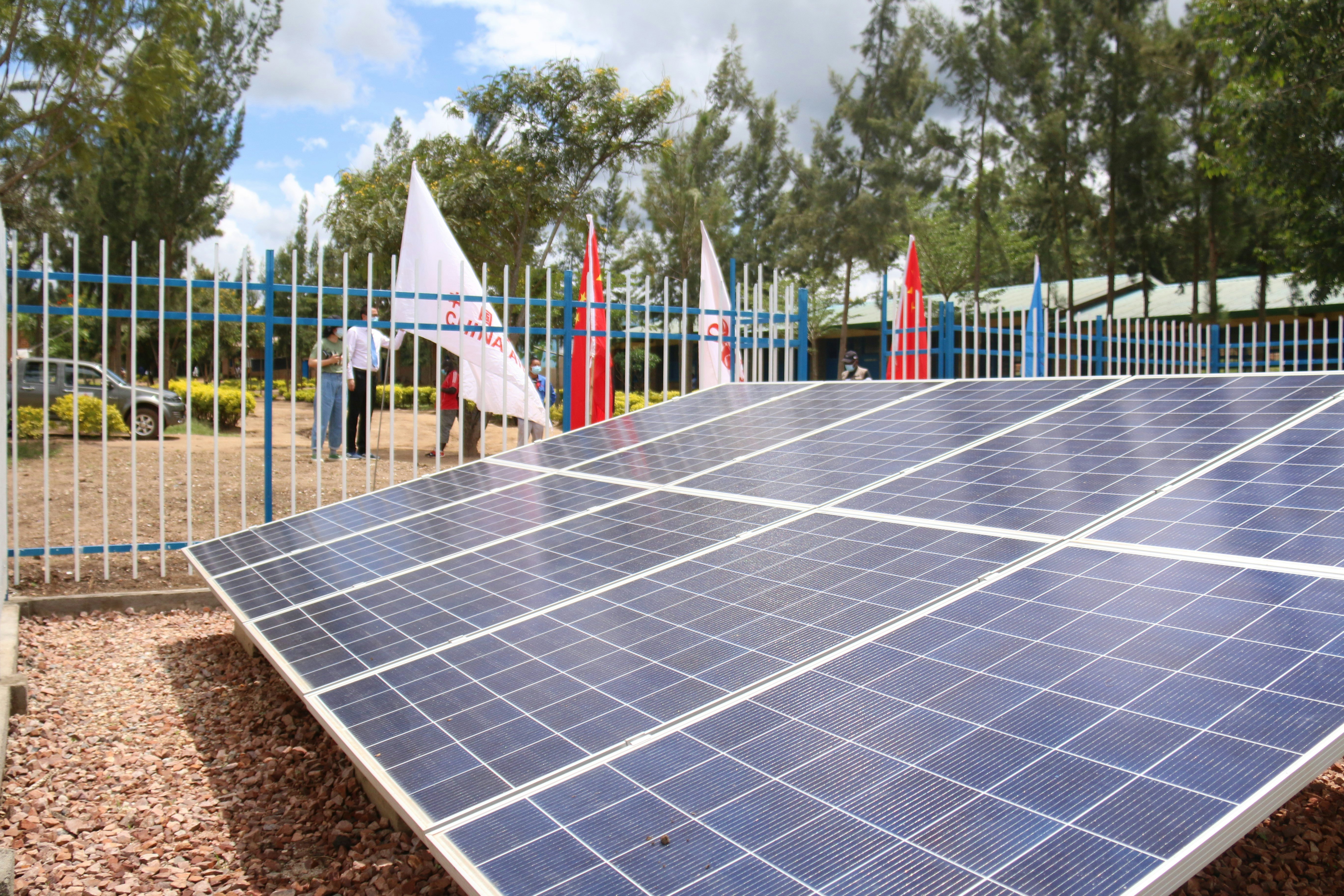
With climate change, the science is clear. We know, with certainty, that we are hurtling toward multiple environmental and human catastrophes. We can no longer debate the science. Yet for some people, science-based arguments will never be enough. After all, the scientific theory of evolution has existed for more than 150 years, with irrefutable evidence, yet only about 35 percent of Americans believe that we evolved by natural processes.
For those who likewise doubt the science of global warming, there are plenty of reasons to support efforts for a zero-carbon future: It will likely save us all money, improve the overall economy, clean our air, and improve our health.
Still, whatever evidence we deploy, it’s likely we’ll have to solve climate change without broad consensus because culture moves more slowly than science. But what if we presented, to policymakers and skeptics, a realistic and feasible action plan for fighting climate change while creating new jobs and a healthier environment? I have such a plan, which can be summed up simply: Electrify everything.
Below, I offer you dinner party-ready talking points for the main questions that people will inevitably have when you suggest such a plan. Each topic is worthy of a book in itself. If I dispose of a favorite baby of yours too quickly here, or you think I have it all ass-backward, then we should grab a beer sometime.
The problem with Carbon Sequestration

Carbon sequestration would be a great technology to support if only it were a good idea. It is attractive because it gives us the illusion we can just keep on burning fossil fuels if we can figure out how to suck the emissions back out of the air.
This idea derives from the natural processes that have kept our planet in balance for millions of years. Trees, plants, and microbes evolved to turn atmospheric CO2 into a useful product — biomass or wood. They do so using cascades of elegant chemical reactions and enzymes. Plants create a large surface area in their leaves and branches, which allows them to do a great job of absorbing CO2 from the atmosphere. All of the planet’s trees and grasses and other biological machines pull a grand total of about two gigatons (GT) of carbon a year. To put that in context, our fossil burning emits 40 GT a year. Imagining that we can build machines that work 20 times better than all of biology is a fantasy created by the fossil-fuel industry so they can keep on burning.
When considering carbon sequestration, we should first remind you just how staggering 40 GT of CO2 is. If you had a giant set of scales and put all the things humans make or move on one side and all of the CO2 we produce on the other, the CO2 would weigh more.
The worst version of carbon sequestration is the most seductive one: capturing CO2 from thin air. This is energetically difficult, and by that, I mean as difficult as juggling babies, bowling balls, electric chainsaws, and flaming tiki torches. You have to sort through a million molecules to find the 400 that is carbon, then convince those 400 to become something they don’t naturally want to be: a liquid or, better yet, a solid. That sorting and conversion costs energy — a lot of it. Even if we could make it work reasonably, we’d have to install zero-carbon energy to run it, which is like using zero-carbon energy to supply our energy needs anyway, except it’s more complicated and expensive to add the carbon-sequestration step. The government should fund sequestration research, within reason and with some skepticism, understanding that it’s a miracle technology we’d like to have but don’t technically need and probably can’t afford.

The challenge of air capture is like a treasure hunt looking for CO2 needles in the atmospheric haystack. You have to look at 2,500 molecules before you find 1 CO2 molecule. For context, it is far easier to find Waldo, who in his various books appears at concentrations of around 1,200 to 4,500 PPM (or more accurately WPP, Waldos Per People).
More seriously, the paper on the topic that I think is the most informative is that by Kurt Zenz House and his colleagues. House analyzes carbon capture from chemistry-first principles and places a very high bar on anyone claiming to be able to sequester carbon dioxide from ambient air cost-effectively. They project it would likely cost $1,000 per ton of CO2; the most optimistic estimate is $300 per ton. Using the likely overly optimistic number, that would be the equivalent of adding 30¢/kWh to the cost of coal-fired electricity or 15¢/kWh to the cost of natural gas. We should invest our time and money in things that will work instead.
This is an expensive, multi-layered cake of bad ideas topped with cynical frosting.
A slightly better idea is capturing the highly concentrated CO2 gas in a smokestack and somehow burying it. It is a little bit easier than the troubling idea of atmospheric CO2 separations because, for some fossil fuels, you can start with a concentrated flow of CO2 in the smokestack instead of a dilute gas that must be filtered from the atmosphere.
Sounds promising. But when we burn fossil fuels, we mix them with oxygen (thats what combustion is), and in so doing, the burned fuels become much larger (and also a gas which makes them larger still). The idea behind carbon sequestration of fossil fuels is basically to stuff the carbon back in the hole in the ground from whence it came. But even if you squeeze carbon dioxide back down into liquid form, which costs you yet more energy and money, the volume is much larger (around five times greater) than the volume you originally took from the ground. That’s because when it came up, it was mostly carbon, and when it goes back, it is carbon with lots of oxygen. People propose putting carbon in other underground reservoirs or at the bottom of the sea where the pressure of the water could contain it. But if you spring a leak, you lose all that hard work.
The economic argument against sequestration is that renewables are already competitive with coal and natural gas in most energy markets, and the added expense of carbon sequestration will not help fossil fuels compete. It is not unreasonable to say that the expense of carbon sequestration would be the death knell of fossil fuels.
Even though smokestack sequestration is a bad idea, the fossil-fuel industry is happy to have the American public confuse that bad idea with the worse idea of capturing the more diffuse emissions from cars, furnaces, or kitchen stoves. Those emissions are extremely distributed — they are generated at the furnace and stovetop ends of the 4.4 million miles of the US natural gas pipeline distribution network and our 260 million tailpipes. It is nearly unimaginably difficult to collect CO2 from those sources and render it into a form that doesn’t end up in the atmosphere.
In addition to the obvious business-as-usual reasons for the fossil industry to champion fossil fuels with carbon sequestration, the self-interest goes further. By injecting this CO2 into the ground, the industry can force more fossil fuels back up; in fact, most of the CO2 that humans have sequestered so far has been used to help with “enhanced” oil and fossil fuel recovery — further perpetuating our reliance on fossil fuel. This is an expensive, multi-layered cake of bad ideas topped with cynical frosting.
The problem with Natural Gas and Fracking
Natural gas sounds benign, like the energy version of organic kale. But despite the “natural” label, it’s largely methane mixed with ethane, propane, butanes, and pentanes. When natural gas burns, like other fossil fuels, it emits carbon dioxide, carbon monoxide, and other carbon, nitrogen, and sulfurous compounds into the atmosphere, contributing to the global greenhouse-gas effect and local air pollution. Don’t be fooled by those who will profit from confusion by promoting ideas like natural gas as a “bridge fuel” to the clean-energy future. Coal gets more air-time as a dirtier fuel, but natural gas is just as filthy if you account for the fugitive emissions. Natural gas is an unsafe, collapsing bridge to nowhere. We burned that bridge... with natural gas.
Fracking — or hydraulic fracturing — is the process of pumping pressurized liquid into good holes to fracture the surrounding rock, which enables gas and other hydrocarbons to be more readily extracted. This technology, and the accompanying revolution of horizontal drilling, gave the U.S. cheap natural gas at exactly the wrong moment in history.
Fracking spews methane directly from the mining sites, which offsets the nominal win from burning natural gas instead of coal. It also leaks from its network of distribution pipes. There are many other underlying problems with mining natural gas, such as water-table pollution and the creation of seismic instabilities. What’s more, it’s a huge distraction from the things that we know to be zero-carbon, like solar, wind, nuclear, pumped hydro, electric vehicles, and heat pumps.
The trouble with Geoengineering and hydrogen

We already are geoengineering, we are just doing it badly — we’re heating the earth and destroying the planet’s lungs. Burning fossil fuels is geoengineering that gives us climate change. The question is, can we geoengineer for good instead?
Geoengineering is not a decarbonization strategy. It is a hope to control the temperature of the Earth while giving up on the CO2 strategy. Many of the early arguments for studying geoengineering were that we should know how to do it, just in case the world turns out to be apathetic about climate change. We now know of multiple paths to geoengineering to mitigate climate change: most of them amount to managing the incoming flux of energy from the Sun. You have probably heard of these ideas — giant space mirrors, scattering reflective particles in the atmosphere, or artificially generated clouds. In an ecosystem as complex as that of Earth, all of these ideas will produce unintended effects.
Embracing geoengineering would also make us forever dependent on future geoengineering solutions. It’s a bit like using liposuction as the solution to obesity when you’re just going to keep eating cheeseburgers. Even if it works, we can’t afford to lose sight of the better, cleaner solutions proposed in the rest of this book.
The problems of trying to control the climate are many. Who sets the temperature? Low-lying islanders and people who love coral or northern Europeans who might benefit from a bit more climate change? We don’t know all of the unintended consequences — environmental, social, or political — that would arise from geoengineering.
It is a good idea to study geoengineering schemes, and it does help us understand earth systems better, but this is not a realistic or permanent solution. It could also draw large amounts of resources away from technologies we already know can solve the problem.
Hydrogen will be useful, but it is not the answer.
Many people believe hydrogen will provide a pathway to decarbonization. But hydrogen is not a source of energy. You won't discover hydrogen; it is a battery in the form of gaseous fuel. The fossil-fuel industry is happy to promote the hydrogen fiction because the majority of hydrogen sold today is a byproduct of the natural gas industry. Only a tiny amount of gaseous hydrogen exists naturally on earth. To make and store carbon-free hydrogen, we would first have to create electricity to power a chemical process called electrolysis, which is not highly efficient. Then we’d have to capture the hydrogen gas and compress it, which consumes about 10–15 percent more energy. Then we’d have to decompress the gas and burn it or put it through a fuel cell. We lose more energy at every step of this process.
As a battery, hydrogen is pretty ordinary; for the one unit of electricity you put in at the beginning, you probably get less than 50 percent out on the other side. This is called “round-trip efficiency.” To run the world off hydrogen, we’d have to produce twice the amount of electricity we currently produce, which would be a monumental challenge. Remember, chemical batteries typically have 95 percent or so round-trip efficiency.
Germany and Japan invested heavily in hydrogen because they don’t have domestic natural gas, and they wanted something with the energy density of gasoline. In theory, hydrogen has about three times more energy per kilogram than gasoline (123 MJ/kg as compared to 44). But you have to compress it and store it in a tank made of exotic materials. The tank weighs much more than the hydrogen gas itself. If you include the tank in your calculations, hydrogen ends up being about a quarter of the energy density of gasoline and only a little more energy dense than batteries.
I started a company called Volute that built better compressed natural gas and hydrogen tanks. This technology is now licensed into both of those industries, so even as someone who would profit greatly from a hydrogen economy, I’m pretty confident it will only end up being a niche player. We can argue about the size of the niche. For example, hydrogen can serve as a high-temperature gas for industrial processes such as steelmaking and can solve some transportation problems.
Hydrogen will be useful, but it is not the answer.
What About A Carbon Tax?
A carbon tax isn’t a solution. A carbon tax is a market fix meant to make all of the other solutions more competitive. It’s designed to slowly increase the price of carbon dioxide, making fossil fuels uncompetitive. The idea is that a high enough carbon tax would make all of the fossil fuels more expensive than at least some of the other solutions, and then a perfectly rational market would use those cheaper clean-energy solutions.
Carbon taxes might have been sufficient if we’d started with them in the 1990s, but for the taxes to achieve the 100 percent adoption rates we need now, they would have to ramp up very quickly. They would also be difficult to implement, as well as regressive, hitting lower-income people hardest.
A carbon tax is a market fix meant to make all of the other solutions more competitive.
It would probably be just as effective to eliminate fossil-fuel subsidies, which in many markets would tip the scales in favor of alternatives anyway. And by the time we have the political will to implement a carbon tax, renewables with batteries will be cheaper than fossil fuels.
A carbon tax is useful in decarbonizing the hard-to-reach end points of the material and industrial economy but is unlikely to be rapid enough to transition home heating to heat pumps and vehicles from internal combustion engines to electric vehicles at the rate required.
The promise of Technological Miracles
“Miracle” technologies include fusion, next-generation nuclear fission, direct solar rectification, airborne wind energy, high-efficiency thermoelectric materials, ultra-high-density batteries, and other technological breakthroughs we can’t yet imagine. All of these miracle technologies would, in fact, help with various components of decarbonization, and the U.S. should invest in them as research topics. With good management, some of them might come to fruition. However, it would be unwise to bet our future on miracles, as our timeline for climate-change solutions is too short. Any ambitious technology like this would take decades to develop and scale up. We don’t have decades.
The real miracles are that solar and wind are now the cheapest energy sources, electric cars are better than vehicles with internal combustion engines, electric radiant heating is cozier than our existing heating systems, and the internet was a practice run and blueprint for the electricity network of the future.
Beware the utility that prioritizes its natural gas business over its electricity business.
There is no way we win this war without the utilities. We need them to deliver three to four times the amount of electricity they do today. They are perfectly poised to be a giant participant in our clean-energy future.
Utilities should be the natural leaders in this project, as they already have five valuable characteristics (thanks to Hal Harvey for pointing this out): 100 percent market penetration, 100 percent billing efficacy, 100 percent knowledge of how we use electricity today (if they want to know it), access to low-cost capital, and an incredible local workforce in every zip code.
Beware the utility that prioritizes its natural gas business over its electricity business. If you really want to make a difference, get yourself elected to the board of your state’s utility commission and steer it in the right direction.
“Electrify” principally concerns itself with the approximately 85 percent of greenhouse-gas emissions related to the U.S. energy system. They are the overwhelming majority of our emissions. The other emissions come from the agricultural sector, land use, and forestry, and industrial non-energy-use emissions.
If we undertook the mobilization to address climate change as suggested in this book, this would also address much of the industrial non-energy emissions and a little of the other two, as well.
Decarbonizing our energy supply is 85 percent of what we need to do. For the other 15 percent, people are successfully making and selling synthetic meats, creating pathways to cooling without terrible refrigerant emissions, and working on steel production with hydrogen and aluminum without CO2. I have to believe that if we commit to the 85 percent, the smart and passionate people working on the other 15 percent will do their part, too.
What About Growing Trees?
Yes, we should — at least a trillion. Grab a shovel!
The best time to plant a tree is 30 years ago. The second-best time to plant a tree is today.
Go plant a tree for your grandkids to climb on. Even better, go plant 30,000.
This article was originally published on The MIT Press Reader by Saul Griffith founder of Rewiring America. Read the original article here.







